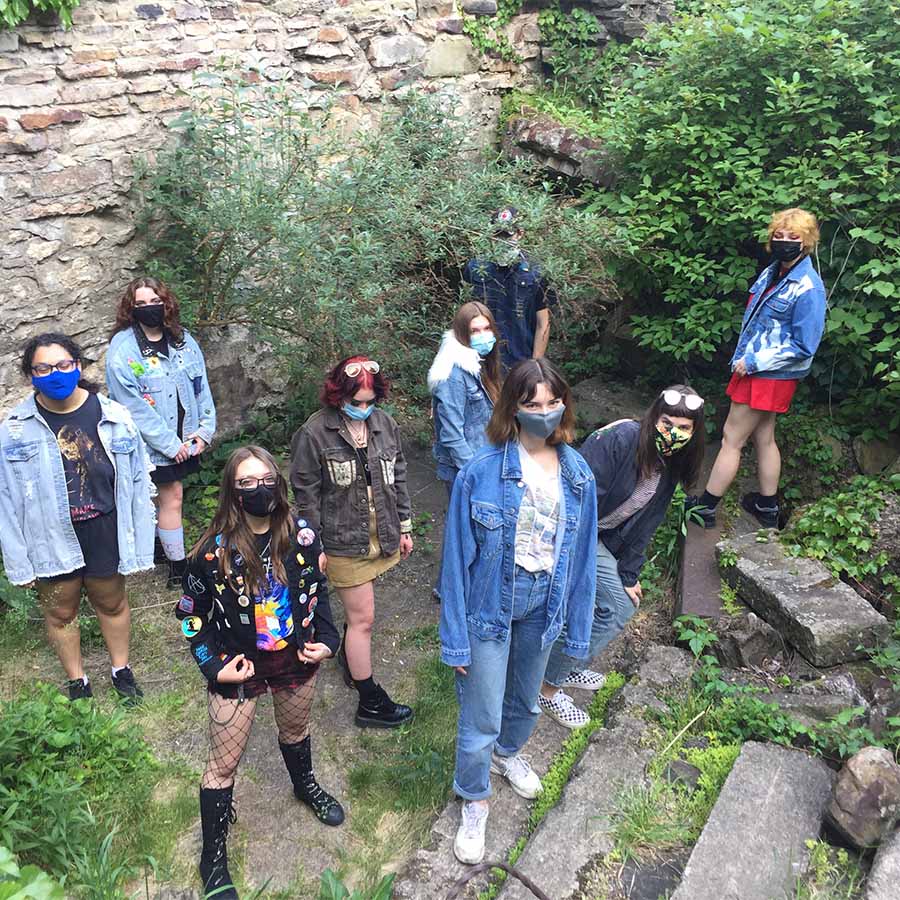This play is a reflection on the (im)possibility of accepting diversity and the other. The fragmented body of the neoplasm—the fruit of unstable conditions—overcomes barriers, loves and denies itself and others, wanders around, forgetting its profession. It frequently and with pleasure divides, goes through dangerous palpation, questions the possibility of contact with the experience of the other. Poorly brought up but very successful, it invites us to a trans-species transition.
Lorem ipsum dolor sit amet, consectetur adipiscing elit. Fusce at elit quis felis ullamcorper vehicula non in est. Maecenas finibus pharetra justo et faucibus. Nulla eu tortor vel ex volutpat efficitur. Vivamus placerat turpis in aliquet venenatis. Quisque ac lacinia mauris. Nam quis lobortis elit. Vestibulum sagittis nisi sit amet euismod hendrerit. Mauris non sodales odio. Donec efficitur molestie quam, sed lobortis massa vestibulum ut.
Nunc at arcu sodales nisi porta euismod non vel neque. Phasellus at lobortis ante, in suscipit justo. Proin non purus vitae nisi molestie consectetur. Vestibulum volutpat lobortis interdum. Vestibulum pretium ligula lorem, egestas ultricies lectus ultricies ac. Curabitur venenatis vulputate dolor.
A spherodendron (round tree) is a 3 dimensional web. It is built using growth rules devised by the artist. It becomes increasingly structurally complex as the building process evolves. It is visually complex and structurally cohesive. Complex networks are strong but also fragile like an ecosystem. There is great strength in healthy nonlinear forms.
This system of building is an experiment and may help us better understand complex networks. Understanding complex interactions is required for a positive future. Managing complex environmental-geopolitical-social-technological challenges requires a new interconnected approach.
A spherodendron is an idealized network. Similar networks form the structure of the world: a computer-generated model of the universe, the layered cellular structure found in the brain cortex, the internet, a map showing how a contagion spreads in a community.
As the spherodendron structure expands from the center, the number of structural limbs doubles with each branching event. When viewed in complete darkness, the branching events (nodes) glow as green points of light. This visual/structural perspective is not apparent in the light. The nodes form concentric layers. These concentric regions are equadence and reminiscent of electron shells. The presence of this secondary concentric layer structure could give credence to the existence of electron webs.
This system is a simple system of growth that results in a complex network. The spherodendron structure makes a universal, functional, and aesthetic sense.
Artist Statement
Experiencing and recognizing complexity is at the root of our perception of natural beauty. In nature, complexity is often labeled as messiness because man is unable to perceive the elements of the natural system interacting. This is reflected in mankind's compartmentalized treatment of the world and has in turn led to the disconnected, unsustainable system humans function within.
I hope to use art and engineering to create something that helps the public understand the interconnected, interdependent, mechanical character of our world. The interactions of the parts that make up all "life" systems are in essence mechanical. If we can understand the mechanisms that seed the origin of complex dynamic behavior, we can assume the interaction of the structure with the physics of the environment inclusively manifests the behavior. Structure + natural laws = behavior.
"The Visual Arts have become increasingly linked to the humanities. This trend is a mistake and that mistake has had consequences deleterious to the seriousness with which the arts are taken." -Marjorie Garber, Director for CCVA Harvard University
Exhibition
With a background in sculpture, microbiology, chemistry, and mechanics, Bill Smith creates technology-based art inspired by nature's functional complexity. By understanding the way nature works on a microcosmic level, his work mimics nature's growth characteristics and inherent beauty. Smith has had solo exhibitions at P.P.O.W. Gallery, NY, Saint Louis Art Museum, and Chicago Cultural Center and participated in residencies at the Fabric Workshop, Philadelphia.









